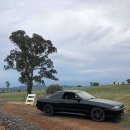Fun street RB25
Announcements
-
Similar Content
-
Latest Posts
-
By joshuaho96 · Posted
I think it's terrible value, it should be half that price IMO. And I'm known as someone who will unironically suggest the GTIII-SS on the RB26 if you have very specific requirements. The GCG RB25DET "hybrid turbo" is 1/3rd the cost of this GTIII-RS kit and sounds like it should fit with zero modifications. Talk to Hypergear as well, maybe they can do something that fits your requirements. -
By Dose Pipe Sutututu · Posted
Should talk to Trent at Chequered Tuning about Wolf ECUs lol... -
Jeez. Was there a Wolf "newer" than the 3D. I thought that was the peak.
-
Pretty sure "a new Wolf" is an oxymoron, that is a real bit of motoring history there!
-
By Dose Pipe Sutututu · Posted
Oh that's a Haltech, however an ECU just commands fuel, spark based on the inputs it receives. So yeah, 30 to 35° of timing advance isn't out of the ordinary.
-






Recommended Posts
Create an account or sign in to comment
You need to be a member in order to leave a comment
Create an account
Sign up for a new account in our community. It's easy!
Register a new accountSign in
Already have an account? Sign in here.
Sign In Now